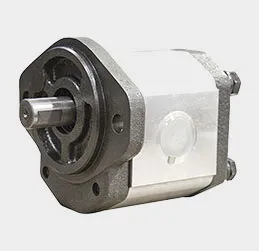high pressure casting
The Process and Advantages of High Pressure Die Casting
High pressure die casting (HPDC) is a manufacturing process that has gained immense popularity in various industries due to its efficiency, speed, and high-quality results. This technique is predominantly used for producing high-precision metal parts, primarily in aluminum, magnesium, and zinc alloys. The process has proven to be exceptionally effective in creating complex shapes and intricate designs with a high degree of accuracy and surface finish.
The High Pressure Die Casting Process
The high pressure die casting process begins with molten metal being injected into a mold at high velocity and pressure. The basic steps involved in this process can be outlined as follows
1. Mold Preparation The mold, typically made from steel, is prepared and heated to a specific temperature. This ensures optimal performance of the casting and reduces the likelihood of defects. Molds are designed with precision to allow for easy release of the final product.
2. Injection Once the mold is prepared, molten metal is forced into it through a shot chamber. The injection is done at high pressure, usually ranging from 1,500 to 30,000 psi. The high pressure used during injection ensures that the molten metal quickly fills the mold cavity, minimizing the risk of air entrapment and ensuring even distribution.
3. Cooling and Solidification After the mold is filled, the metal begins to cool and solidify. The cooling rate significantly affects the properties of the final product, with quicker cooling times often leading to finer microstructures and improved mechanical properties.
4. Ejection Once the metal has solidified sufficiently, the mold is opened, and the casting is ejected. Depending on the complexity of the part, additional processes such as trimming or machining may be required to achieve the final specifications.
5. Finishing Finally, the cast parts often undergo finishing processes like surface treatment, coating, or powder coating to enhance durability and appearance.
Advantages of High Pressure Die Casting
The high pressure die casting process offers several significant advantages that make it a preferred choice for many manufacturers
high pressure casting

1. High Precision and Accuracy HPDC allows for the production of parts that have tight tolerances. The process can achieve dimensional consistency and high-quality finishes without the need for further machining in many cases.
2. Cost-Effective Production For high-volume production runs, HPDC is extremely cost-effective. The initial tooling costs can be high, but once the molds are made, the cost per unit decreases significantly, making it ideal for mass production.
3. Complex Shapes and Designs The capability to create complex geometries and intricate designs is one of the standout features of HPDC. This flexibility allows designers to push the boundaries of product design without compromising manufacturability.
4. Material Efficiency Using high pressure die casting reduces material waste compared to other processes. The precision of the process allows for lean manufacturing, leading to fewer defects and less scrap material.
5. Rapid Production Cycle The speed of the HPDC process is another significant advantage. The entire cycle—from mold filling to ejection—can take just a few seconds, resulting in high productivity.
6. Enhanced Mechanical Properties Parts produced via high pressure die casting often exhibit superior mechanical properties, including strength, durability, and resistance to wear and corrosion, especially when aluminum and magnesium alloys are used.
Applications of High Pressure Die Casting
High pressure die casting is used across a multitude of industries, including automotive, aerospace, electronics, and consumer goods. In the automotive sector, components such as engine blocks, transmission cases, and structural parts are often produced using HPDC. The aerospace industry utilizes this technique for lightweight and high-strength components, while electronics manufacturers benefit from its ability to produce finely detailed housings and heat sinks.
Conclusion
High pressure die casting is a robust manufacturing process that combines precision, efficiency, and versatility. As industries continue to evolve, the demand for advanced manufacturing techniques like HPDC will only increase. This method not only meets the requirements for high-quality production but also aligns well with the principles of lean manufacturing, making it a key player in the future of production technology. As manufacturers explore new avenues for innovation, HPDC stands out as a prime method for developing intricate, reliable, and cost-effective metal components.
-
OEM Sand Cast Pump Valve Fittings - Baoding Hairun | Precision Engineering, CustomizableNewsJul.30,2025
-
OEM Sand Cast Pump Valve Fittings - Baoding Hairun Machinery And Equipment Trading Co., Ltd.NewsJul.30,2025
-
OEM Sand Cast Pump Valve Fittings - Baoding Hairun Machinery And Equipment Trading Co., Ltd.NewsJul.30,2025
-
OEM Sand Cast Pump Valve Fittings - Baoding Hairun Machinery|Precision Engineering&Fluid ControlNewsJul.30,2025
-
OEM Sand Cast Pump Valve Fittings - Baoding Hairun Machinery And Equipment Trading Co., Ltd.NewsJul.30,2025
-
OEM Sand Cast Pump Valve Fittings-Baoding Hairun Machinery And Equipment Trading Co., Ltd.NewsJul.30,2025















